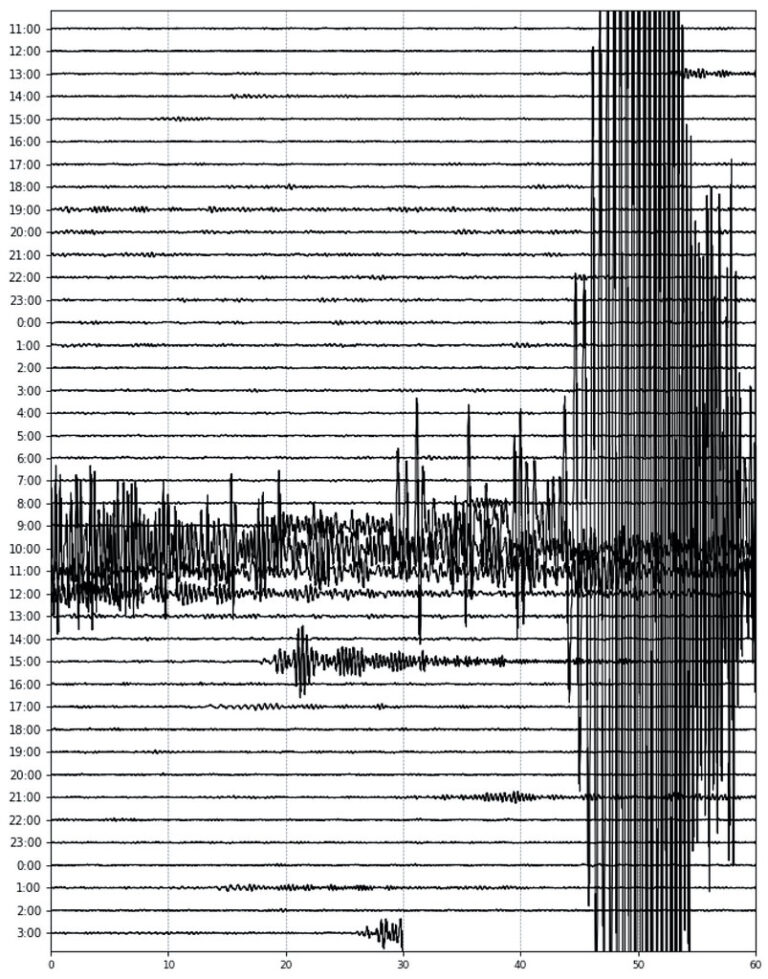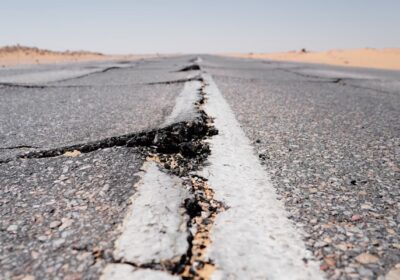
Unlocking Subsurface Secrets: Exploring Gamma Ray Logs
The interpretation of spectral gamma-ray logs holds immense significance within the realm of oil and gas exploration and reservoir development, as well as in the comprehensive study of diverse geological structures. This discourse delves deeply into the intricacies of spectral gamma-ray logging, a highly sophisticated method employed to gauge the natural gamma radiation emitted by the surrounding rock formations encasing a borehole. Unlike conventional gamma-ray logging instruments that furnish a cumulative gamma radiation tally, spectral gamma-ray logs meticulously discern among gamma rays emitted by distinct isotopes, including potassium-40, uranium, and thorium. This discriminative capability furnishes a more nuanced comprehension of the mineral composition and lithological attributes of the rock strata, thereby empowering geologists and petrophysicists to make astute determinations concerning the positioning, characteristics, and potential productivity of hydrocarbon reservoirs.
Ensuring Optimal Tool Performance:
Calibrating your logging tool is paramount for accurate data acquisition, and two primary factors greatly influence the quality of your logs: tool calibration and drilling mud composition. While it’s tempting to assume that the delivered logs have undergone rigorous quality checks, the reality often falls short. Take charge of ensuring the integrity of your logs, as nobody else will prioritize it as much as you.
Tool Calibration Importance:
- The tool’s measurement device comprises a thallium-laced NaI crystal and a photomultiplier, both sensitive to temperature fluctuations. Thus, frequent calibration becomes essential, particularly when the tool operates in environments with varying temperatures;
- Calibration frequency should increase significantly when surface temperatures deviate drastically from downhole conditions. For instance, operations during harsh winter conditions in regions like Canada demand more frequent calibrations to maintain accuracy.
Drilling Mud Composition Impact:
- Drilling mud formulations play a pivotal role in log quality, with ingredients like KCl for borehole stability and barite for gamma-ray absorption;
- Understanding the effects of drilling mud components on log measurements is crucial. For instance, KCl can skew apparent potassium content readings, while barite diminishes count rates, especially affecting low-energy measurements like potassium.
Enhancing Precision through Quality Control Strategies:
In the realm of uranium logging, the occurrence of negative readings on the uranium log stands out as a pivotal gauge for maintaining quality control standards. Such readings, though somewhat expected in small amounts, can act as a red flag when their frequency surpasses the norm. An abundance of these zero-crossings often points to potential issues with the calibration of the measuring instruments, signaling a need for immediate attention.
To ensure the integrity and precision of data derived from these logs, implementing a comprehensive quality control protocol is essential. This process involves a meticulous review of all collected data, aiming to identify, address, and correct any discrepancies or anomalies present. By doing so, professionals can eliminate the risk of erroneous readings and the negative impact they might have on the analysis.
Key Steps for Robust Quality Control:
- Thorough Calibration Checks: Regularly verify the calibration of logging tools to ensure their accuracy and responsiveness. This helps in minimizing the chances of recording inaccurate data that could compromise the quality of analysis;
- Data Scrutiny: Implement a systematic approach to examine the logs for unusual patterns such as negative readings or unexpected zero-crossings. Recognizing these patterns early can prevent flawed data from skewing the results;
- Correction Protocols: Develop and adhere to a set of procedures for rectifying identified issues. Whether it involves recalibrating equipment or discarding unreliable data, these protocols are crucial in maintaining the credibility of the analysis;
- Continuous Monitoring: Quality control is an ongoing process. Continuous monitoring and periodic review of the equipment and data collection processes help in identifying new issues promptly, ensuring the long-term reliability of the data;
- Staff Training: Equip the team with the necessary knowledge and skills to recognize and address quality control issues. Training should cover the technical aspects of the tools used, as well as the best practices for data analysis and quality assurance.
Interpreting Spectral-Gamma Ray Logs: Beyond Elemental Ratios
Spectral-gamma ray logs offer a window into the geological composition of subsurface formations, with a focus on elemental concentrations. While the traditional approach emphasizes the correlation between Th/K and Th/U ratios, a deeper understanding unveils a wealth of insights into various geological phenomena. Let’s dive into the nuances and implications of spectral-gamma ray log interpretation:
Elemental Ratios: Th/K and Th/U
- Th/K Ratio: This ratio serves as a key indicator for petrophysical interpretation and log correlation. It helps discern lithological variations and sedimentary environments;
- Th/U Ratio: Similarly, the Th/U ratio offers valuable clues about sediment provenance, depositional conditions, and diagenetic processes.
Schlumberger Cut-offs and Adjustments
Schlumberger’s methodology involves specific cut-offs to ensure accurate calculations. These adjustments compensate for extreme values and enhance the reliability of interpretations:
- Uranium (U) Cut-off: If uranium concentration falls below 0.5, it’s set to 0.5 to stabilize the ratio and mitigate distortions;
- Potassium (K) Cut-off: Similarly, if potassium concentration is below 0.004, it’s adjusted to 0.001. This normalization minimizes noise and enhances the clarity of results.
Understanding High K Values
Elevated potassium concentrations in spectral-gamma ray logs often signal the presence of specific minerals and geological features:
- Potassium Feldspars and Micas: These common minerals contribute to high K values, reflecting their abundance in the formation;
- Glauconite: Known for its distinctive green hue, glauconite can cause spikes in the K log, offering valuable stratigraphic markers.
Interpreting High Th Values
Increased thorium concentrations unveil important geological phenomena and sedimentary processes:
- Heavy Minerals in Channel Deposits: High Th values may indicate the presence of heavy minerals, especially in channelized sedimentary environments;
- Terrigenous Clays: Enhanced Th concentrations can result from elevated input of terrigenous clays, shedding light on depositional dynamics and sediment transport.
Implications of U Concentrations
Uranium concentrations in spectral-gamma ray logs provide insights into organic matter content and depositional environments:
- Organic Matter Presence: Elevated U values are often associated with the presence of organic matter, hinting at potential source rocks and hydrocarbon prospects;
- Black Shale Deposits: According to the Ocean Drilling Program (ODP), black shale formations typically exhibit high U concentrations (> 5 ppm) and low Th/U ratios (< 2), offering valuable markers for stratigraphic correlation and paleoenvironmental reconstructions.
Exploring Geological Surveys: Unveiling Insights from Kansas Geological Survey Open File 90-27
Delving into the geological archives of the Kansas Geological Survey opens a window to the Earth’s history, offering a plethora of insights waiting to be unearthed. In the report labeled as open file 90-27 authored by Macfarlane et al., a fascinating interpretive approach unfolds, particularly evident in the Th/K log, where minerals such as feldspar, mica, and illite-smectite are meticulously labeled. Additionally, the Th/U log provides a captivating glimpse into uranium “fixedness,” serving as a proxy for organic matter distribution. Also, discover the seismic wonders with geophone technology. Delve into its applications and revolutionize your understanding of Earth’s vibrations!

However, while these logs offer valuable data, it’s essential to recognize that interpretation is an art as much as it is a science. Here’s a deeper look into the significance and nuances of interpreting geological surveys:
Understanding Interpretive Approaches:
- Interpretive approaches in geological surveys vary, ranging from straightforward labeling to more complex analyses incorporating proxies and indicators;
- Recognizing the significance of mineral associations and elemental ratios can provide crucial insights into geological processes and depositional environments.
Unlocking the Potential of Spectral Gamma-Ray Logs:
- Spectral gamma-ray logs serve as invaluable tools in geological interpretation, offering insights into lithology, mineralogy, and organic matter content;
- While spectral gamma-ray logs provide a wealth of information, they are not inherently diagnostic on their own and require calibration to specific basins and stratigraphic settings.
The Importance of Calibration:
- Calibration involves a meticulous comparison of core samples with log data, preferably using quantitative methods;
- By calibrating spectral gamma-ray logs to the local basin and stratigraphy, geologists can enhance the accuracy and reliability of their interpretations.
Tips for Effective Interpretation:
- Integrate Multiple Data Sources: Combine spectral gamma-ray logs with other geological data, such as core samples, well logs, and seismic data, for a comprehensive interpretation;
- Consider Regional Geology: Factor in regional geological trends and depositional environments when interpreting logs to contextualize findings and avoid misinterpretations;
- Utilize Statistical Analysis: Employ statistical techniques to quantify relationships between log responses and geological parameters, enhancing the robustness of interpretations;
- Seek Collaboration: Collaborate with multidisciplinary teams, including petrophysicists, geochemists, and stratigraphers, to leverage diverse expertise and perspectives in geological interpretation.
Conclusion
In conclusion, the practice of interpreting spectral gamma-ray logs emerges as an indispensable tool in the realm of oil and gas exploration and geological investigations. Through its sophisticated technique of discerning between various isotopes’ gamma radiation emissions, it offers a heightened understanding of mineral composition and lithological attributes within rock formations surrounding a borehole. This depth of insight equips professionals with the knowledge needed to make informed decisions regarding the location, quality, and potential yield of hydrocarbon reservoirs. As technology advances and methodologies evolve, spectral gamma-ray logging continues to stand as a vital component in the quest for efficient and effective resource exploration and development.

















